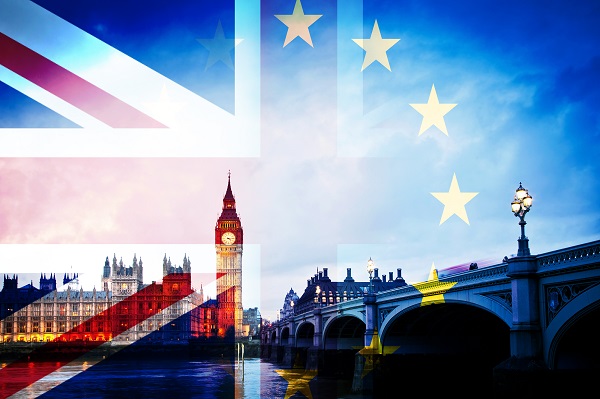
Upcoming changes to UK-EU trade rules and processes in 2024 were the subject of an Institute of Export and International Trade (IOE&IT) webinar yesterday, with the Border Target Operating Model (BTOM) and the Carbon Border Adjustment Mechanism (CBAM) explained to over 300 businesses.
Senior trade and customs specialist at IOE&IT, Anna Doherty, was joined by director of strategic partnerships and international development, Kevin Shakespeare, as well as host and executive editor Will Barns-Graham, for the event.
BTOM brief
The BTOM was high on the event’s agenda as Doherty set out what it means for traders, following on from IOE&IT’s recent publication of a white paper outlining what new requirements and processes it will entail.
With the BTOM, the UK government is aiming to introduce a digital-first, risk-based approach to border controls, including several post-Brexit checks that have not yet been introduced for EU goods entering Britain. Many of these import controls will enter force next year, starting with a raft of sanitary and phytosanitary (SPS) requirements coming in on 31 January.
An early poll highlighted the importance to traders of educating themselves on the BTOM, and other upcoming developments, when it asked attendees how prepared they felt for next year’s changes. A total of 65% suggested they did not feel sufficiently prepared.
Doherty said that the BTOM is introducing “a lot of changes” to the movement of goods, and though it doesn’t touch on everything, it’s important for traders in every sector to know about it and whether it does affect them.
Timeline
Reviewing the timeline of the BTOM’s introduction, Doherty detailed its three phases. The first, on 31 January, sees the introduction of full import controls on goods entering the UK from the island of Ireland, as well as the start of health certification on medium-risk animal products, plant products and high-risk food and feed of non-animal origin (HRFNAO) from the EU.
That will be followed by documentary and risk-based identity and physical checks on HRFNAO on 30 April, then the same on goods from the island of Ireland, as well as a new requirement for safety and security declarations on EU imports later in the year, on 31 October.
These safety and security declarations were the subject of one delegate question. The delegate asked whether they applied only to EU-originating goods or to any goods shipped from the bloc even with other origins.
Doherty explained:
“Safety and security declarations look at the security of the movement. Regardless of where a good is from, these measures look at where it is moving from.
“The information you will need is actually less than a customs declaration, because it does not concern duties and taxes or other fiscal elements – just the security and safety of the movement.”
Alongside all of these changes are updates to UK customs IT systems, such as the first strategic release of the Single Trade Window (STW), as well as the Customs Declaration System (CDS) becoming mandatory for exporters from 31 March.
Considerations
It’s not just the BTOM for traders to consider next year, and a later poll suggested that the change generating most concern was the EU’s Carbon Border Adjustment Model (CBAM), which is being gradually introduced for those trading with the bloc.
Shakespeare emphasised that it is “compliant traders who will benefit most” in coming years, while one attendee expressed the need for more information on the CBAM. Doherty noted the EU’s wide variety of “very, very good” educational resources, including Q&As, nano-learning modules and pre-recorded webinars.
A potential UK CBAM was also among the subjects tackled in the Q&Aat the end of the event, where Doherty suggested that “a UK CBAM is probably coming”.
“It will be interesting to see if it aligns with the EU and follows similar rules and methodologies.
“The problem is, even if the rules are the same, you still potentially have to separate the regimes you have to comply with, which is an additional administrative burden for firms. If they are more closely aligned, it will be a little easier to comply.”
Freeport talk
Another webinar with IOE&IT representation was Tuesday’s (5 December) Department for Business and Trade-convened webinar on UK freeports.
Host Irina Shmakova was joined by IOE&IT trade and customs specialist Louise Di Blasi and Angus Hirst of SSO International Forwarding to discuss the opportunities offered by the selected regions.
Di Blasi, who spoke on her experiences at the Liverpool City Region freeport, where she is head of customs, said she is often asked what type of businesses are best positioned to benefit from the customs incentives and other measures included in freeports.
“There’s not one answer that fits all – it’s dependent on how your business operates. It’s so very important to fully understand what the offering is. Speak to a consultant. It’s a long process but a worthwhile one.”
In response to one question from Shmakova, Di Blasi also made clear that, though you need to be within the freeport region to become a customs site operator under the scheme, you do not need to be within its bounds to become an ‘authorised user’ of a customs site.
Hirst added that making the most of freeports doesn’t mean your goods have to arrive into that port – goods can enter and clear customs elsewhere, as long as the shipment comes directly to a warehouse in the freeport region.



